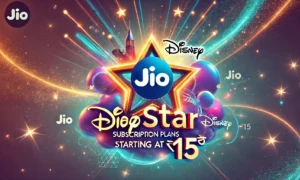Urbanic, the well-established global fashion brand, has recently made headlines with the launch of its sister brand, ‘Savana’, in India. This entry marks a significant move for Urbanic as it seeks to cater to India’s rapidly expanding Gen Z demographic, offering them stylish and affordable fashion options. The brand aims to tap into the growing youth market, revolutionizing how fashion is perceived and consumed in India. Through innovative retail strategies, digital-first approaches, and a keen understanding of consumer trends, Savana is set to redefine the fashion retail landscape in India, a market known for its diverse tastes and vibrant fashion scene.
In this article, we explore the deeper context surrounding Urbanic’s launch of Savana in India, its potential impact on the Indian fashion industry, and the strategies the brand is likely to adopt to drive success among Indian Gen Z consumers.
The Genesis of ‘Savana’: A New Chapter in Urbanic’s Growth Story
Urbanic, known for its trendy and affordable fashion globally, is now venturing into the Indian market with a distinct approach aimed at attracting the Gen Z consumer base. With a history of catering to youth fashion in international markets, Urbanic has recognized India’s burgeoning fashion-conscious Gen Z segment as a critical opportunity. The ‘Savana’ brand aims to offer these young consumers a fashion-forward, affordable line of clothing, accessories, and footwear that resonates with their values of self-expression, individuality, and sustainability.
The brand’s entry into India follows the growing trend of global fashion players entering the country and launching sub-brands targeted specifically at Indian consumers. For Urbanic, Savana is not just another brand extension—it is an attempt to differentiate itself in an increasingly competitive market by offering value-based fashion that connects with the aspirations of today’s youth.
Targeting India’s Gen Z: A Market on the Rise
India’s Gen Z population, estimated to be around 600 million, represents a significant consumer force that is reshaping the future of retail in the country. Known for their digital savviness, diverse tastes, and unique sense of style, Gen Z consumers in India are moving away from traditional shopping methods and embracing online retail and social media-driven trends.
Fashion brands looking to engage this demographic must not only understand their preferences but also adapt to their digital-first shopping behaviors. Gen Z’s fashion choices are often influenced by social media influencers, online trends, and the need for clothing that aligns with their personal identity and values. As such, Savana’s offerings are expected to cater to these needs with trendy, high-quality yet affordable fashion, supported by a strong online presence and influencer marketing.
Key trends influencing Gen Z’s fashion decisions include:
- Sustainability: A growing demand for eco-friendly, ethically made clothing.
- Personalization: Preference for items that express individuality.
- Value for money: Affordable fashion that does not compromise on style.
- Fast fashion: Quick-turnaround, constantly updated collections that reflect current trends.
Savana’s product range will feature versatile, stylish pieces that cater to these desires, allowing Indian Gen Z consumers to experiment with fashion without breaking the bank. This is particularly important in India, where affordable fashion that balances quality and price is a significant driver of purchase decisions.
Savana’s Product Range: Fashion Meets Affordability
Savana’s product lineup includes a broad selection of women’s fashion—from casual wear, party wear, and athleisure to accessories such as bags, jewelry, and footwear. The brand’s strategy revolves around offering a fashion experience that aligns with global trends while keeping prices competitive for young, budget-conscious consumers.
Key features of the Savana product range include:
- Trendy collections: Designed to appeal to fashion-forward Gen Z consumers, offering trendy styles, such as oversized fits, crop tops, and bold prints.
- Sustainable materials: Savana will emphasize eco-friendly practices, using materials such as organic cotton and recycled fabrics.
- Inclusive sizing: Catering to a diverse body type range to ensure inclusivity and accessibility for all consumers.
- Collaborations: Limited-edition collections with influencers and designers that appeal to Gen Z’s desire for exclusive, unique items.
By focusing on affordability, trendiness, and sustainability, Savana is poised to tap into the growing market of young Indian consumers who want to stay stylish but also care about eco-conscious fashion.
Digital-First Approach: Shaping Retail Strategy
A key component of Urbanic’s strategy for Savana is its digital-first approach. With India’s online shopping industry growing rapidly, Savana has recognized that a strong online presence is essential to reach Gen Z consumers. The brand will focus on e-commerce, social media marketing, and influencer collaborations to promote its products and create an engaged community.
Social Media and Influencer Collaborations
Social media is a driving force behind fashion trends for Gen Z. Instagram, TikTok, and YouTube are platforms where young consumers seek inspiration, and influencers have the power to influence their purchasing decisions. Savana’s marketing strategy will likely revolve around influencer partnerships, where fashion influencers, celebrities, and micro-influencers will promote Savana’s products, showcasing how they style them in real life.
Additionally, content marketing on platforms like Instagram and YouTube will play a crucial role. Short-form videos showcasing styling tips, behind-the-scenes content, and trend reports will help the brand connect with Gen Z consumers. A strong, interactive social media presence will also foster a sense of community around the brand, encouraging users to share their own Savana outfits, creating an organic growth cycle.
Pop-Up Stores and Offline Presence
While Savana’s primary retail focus will be online, Urbanic will likely introduce pop-up stores or experiential retail outlets in major cities like Delhi, Mumbai, and Bangalore to create an offline presence and boost brand visibility. Pop-up stores have become an effective retail strategy for engaging young consumers, allowing them to physically experience the brand in an immersive setting before making a purchase online.
These pop-up locations will offer a dynamic shopping experience, often incorporating interactive elements such as virtual try-ons, personalized styling sessions, and exclusive in-store events. Such initiatives help generate excitement and create brand loyalty, as consumers feel more connected to the brand.
The Competitive Landscape: Savana’s Position in the Indian Fashion Market
India’s fashion retail market is highly competitive, with numerous international and domestic players vying for the attention of the Gen Z consumer. Brands like Zara, H&M, Bershka, and Myntra already dominate the affordable fashion space. However, Savana’s distinct focus on affordability combined with sustainability and digital-first strategies may help it carve out a niche in the market.
Savana will likely compete with other fast-fashion brands by positioning itself as a youth-centric brand that offers value for money, while also staying attuned to the latest fashion trends. Additionally, sustainability could provide Savana with a competitive edge in an era where eco-consciousness is becoming increasingly important to Gen Z consumers.
The growth of online shopping platforms such as Myntra, Ajio, and Amazon Fashion has also created a highly competitive online retail space. However, with its digital-first strategy, Savana’s focus on influencer-driven content, and social media engagement, it is positioned to stand out from the crowd.
Challenges and Opportunities for Savana
While the launch of Savana presents numerous opportunities, it also comes with challenges. The competition from established global brands, coupled with the fast-changing tastes of Gen Z, will require Savana to be agile and innovative in its approach.
Additionally, managing supply chains, ensuring quality control, and maintaining a steady stream of fresh, trend-driven collections will be essential for maintaining consumer interest. Savana must stay ahead of fast fashion trends and continuously engage with its audience to keep them coming back.
On the other hand, India’s vast, youthful population presents enormous potential. If Savana successfully taps into the desires of Gen Z for affordable, stylish, and sustainable fashion, it could become a major player in the Indian fashion market in the coming years.
The Future of Savana in India: Strategic Roadmap
Savana’s entry into India is only the beginning of its journey. Over the next few years, the brand is expected to scale up its presence by expanding its product offerings, forging new partnerships, and improving its online shopping experience. It will likely explore various sales models, from flash sales to exclusive collections, to generate excitement and build momentum.
As consumer preferences evolve, Savana’s success will largely depend on its ability to stay ahead of fashion trends, deliver high-quality, affordable clothing, and engage with the Indian Gen Z audience through innovative, digital-first strategies.
Specifications Table: Savana Fashion Brand Overview
| Category | Details |
|---|---|
| Brand Name | Savana (Urbanic’s sister brand) |
| Target Audience | Gen Z consumers (ages 18-25) |
| Product Offering | Trendy women’s clothing, accessories, footwear |
| Price Range | Affordable fashion with a focus on value for money |
| Sustainability | Emphasis on eco-friendly materials and ethical production practices |
| Sales Channels | Primarily e-commerce, with potential pop-up stores in key cities |
| Marketing Approach | Social media-driven, influencer collaborations, and content marketing |
| Brand Values | Personalization, sustainability, affordability, and style |


